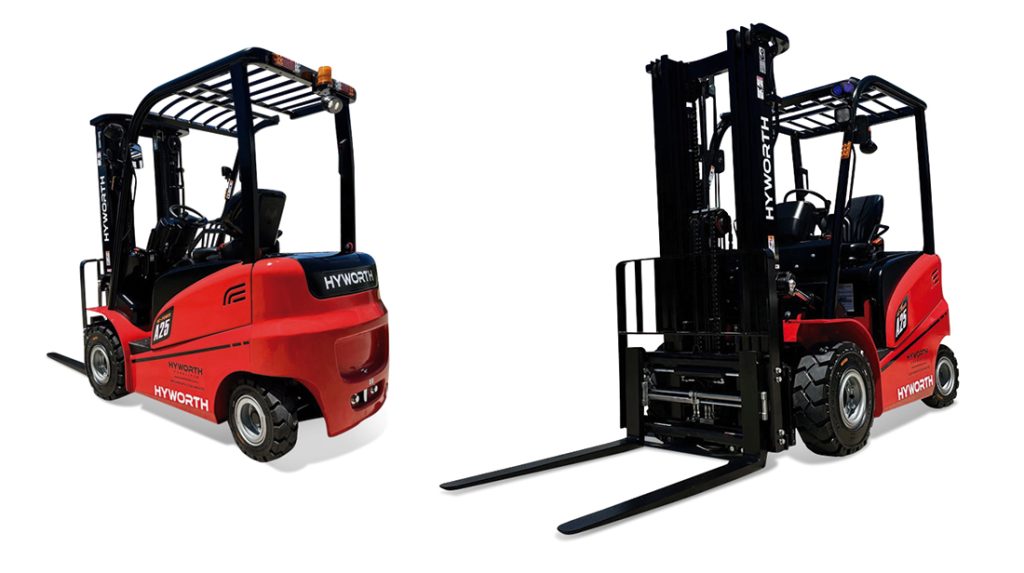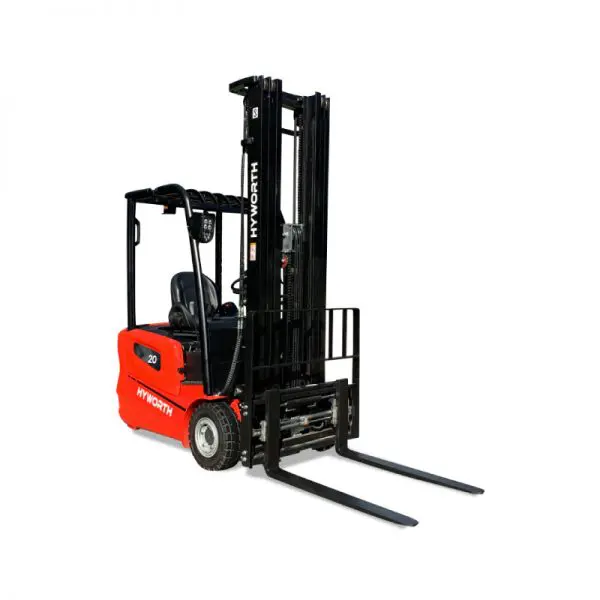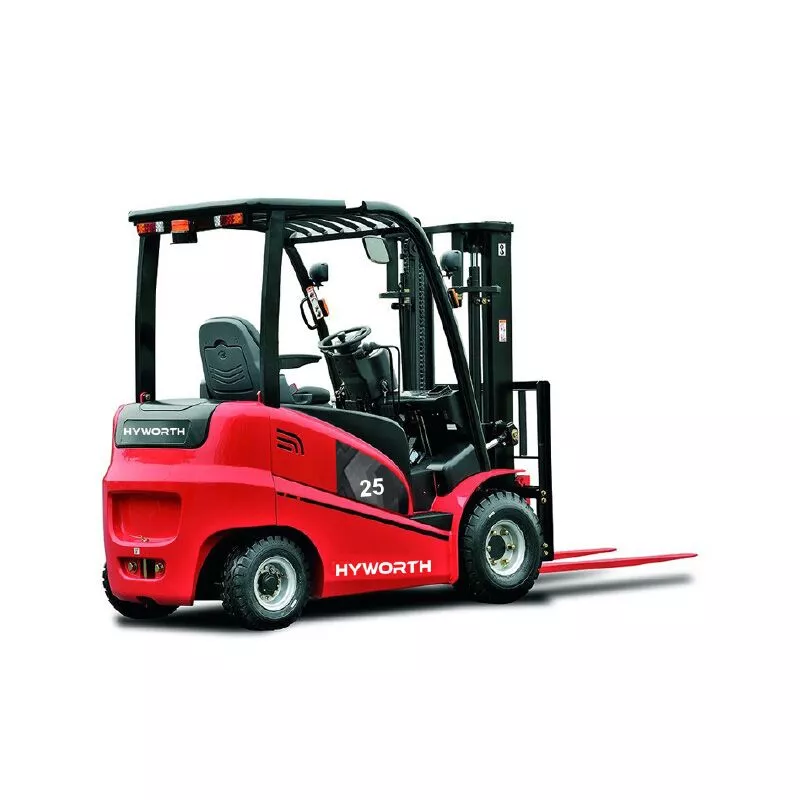
When it comes to moving heavy loads in warehouses and on job sites, the counterbalance forklift is a game-changer. Its smart design ensures that heavy items are safely and efficiently moved, making tasks smoother and more manageable. As more businesses think about the environment and the efficiency of their operations, electric counterbalance forklifts are getting a lot of attention. They’re great for indoor work and don’t produce harmful emissions. In this article, we’ll take a closer look at counterbalance forklifts, diving into how they work and why the electric versions are becoming so popular.
What is a counterbalance forklift? An insightful breakdown
So, what is a counterbalance forklift? Let’s break it down. At its heart, a counterbalance forklift is aptly named because of its primary feature: the counterbalance. This is a hefty weight situated at the back of the machine. Think of it like the backbone of the forklift, providing the much-needed balance when lifting heavy loads. The counterweight is crucial as it ensures the forklift doesn’t tip over when it’s hauling something heavy at the front. Without this balancing act, lifting large items would be risky, not to mention inefficient. This smart design means businesses can rely on these machines day in, day out, to move items safely and effectively.
Exploring the two main types: What makes a counterbalance unique?
When considering the question, “What is a counterbalance forklift?” it’s vital to understand there are core varieties within this category. Let’s explore them.
Combustion engine counterbalance forklifts
These forklifts, fuelled by petrol, diesel, or LPG, have long been the go-to for many businesses. Their strength is their main selling point. They’re tough, durable, and great for outdoor jobs where the big lifting happens. But they’re not perfect. One major downside? They give off emissions. This means they’re not the best pick for indoor spaces or places where clean air is super important. Plus, with the growing focus on being eco-friendly, many companies are now looking for cleaner options.
Battery electric counterbalance forklifts
On the flip side, we have the electric ones. These are the new kids on the block and they’re gaining popularity fast. Why? They’re powered by batteries, so no nasty emissions. That makes them perfect for indoor work or places where you need to keep things clean and green. They’re also quieter and can sneak into tighter spots, making them versatile for various tasks. As businesses become more environment-conscious, these electric forklifts are quickly becoming a top choice.
Why electric counterbalances are changing the game
There’s a clear shift happening in the forklift landscape, with the electric counterbalance forklifts leading the charge. But why is this type gaining so much traction? Let’s delve into the benefits.
Firstly, they’re incredibly environmentally friendly. Unlike their combustion counterparts, electric counterbalance forklifts produce no emissions. That means no harmful gases or fumes polluting the air, making them a favourite for businesses looking to boost their green credentials.
Moreover, their efficiency is hard to beat. Electric forklifts operate quietly and smoothly, often requiring less maintenance than combustion-engine models. Their consistent power delivery ensures tasks are completed efficiently, without the hiccups of fluctuating fuel levels or engine issues.
Safety is paramount, and here too, electric models shine. With no emissions, there’s a reduced risk of health hazards from fumes. Plus, their quieter operation means fewer disruptions and a more focused working environment, reducing potential accidents.
One of the most compelling reasons for their rising popularity, especially in indoor settings, is the zero emissions factor. Indoor environments, like warehouses or manufacturing units, require clean air for both products and personnel. Electric forklifts fit the bill perfectly, ensuring a safer and healthier workspace.
Leading electric counterbalance models
In the quest to understand “what is a counterbalance forklift”, it’s crucial to explore top models that define the industry. Hyworth and Toyota offer some of the best electric models in the market. Let’s peek into their unique features:
Hyworth 1.5T 3 Wheel Electric: Perfect for manoeuvrability in tight spaces, this model boasts a compact design. Its 1.5T capacity ensures robust lifting, and being a 3-wheeler, it promises agility on the warehouse floor.

Hyworth 1.8T 3 Wheel Electric: With slightly more lifting power, this model still maintains the nimbleness you’d expect from a 3-wheeler, making it great for both small and medium-sized tasks.
Hyworth 2.5T 4 Wheel Electric: A powerhouse in the electric forklift world, this 4-wheeler promises stability, especially for heavier lifts. Its 2.5T capacity makes it versatile for a range of operations.

Hyworth 2T 3 Wheel Electric: Balancing capacity and flexibility, this model is an all-rounder, suitable for varied warehouse and storage tasks.
Toyota 2.5T 4 Wheel Electric: Toyota brings reliability and efficiency to the table with this 4-wheeler. Designed for heftier tasks, it’s both powerful and steady.
Toyota 2T 3 Wheel Electric: Prioritising swift movement with a decent lift capacity, this model is ideal for environments that demand speed and efficiency.
Finding your perfect match
If you’ve found yourself pondering, “What is a counterbalance forklift that’s right for me?”, you’re not alone. Navigating through the options can be a tad overwhelming. However, by considering a few key factors, you can zero in on the perfect forklift for your workspace.
Indoor vs. outdoor: The location of your operations plays a pivotal role. While electric forklifts, like those offered by Hyworth, are stellar for indoor settings due to zero emissions, combustion engine models might be more apt for rugged outdoor terrains.
Lifting capacity needs: It’s essential to assess the weight and volume of items you’ll be handling. From the Hyworth 1.5T 3 Wheel Electric for lighter loads to the robust Toyota 2.5T 4 Wheel Electric for heftier tasks, there’s a forklift to suit every need.
Environmental concerns: Today, sustainability isn’t just a buzzword; it’s a necessity. Electric models, with their eco-friendly credentials, are increasingly becoming the go-to for businesses committed to green practices.
Now, here’s the cherry on the cake: Hyworth isn’t just a provider; they’re your partner in this decision-making journey. With personalised service that listens to your needs, and the intuitive “Find your perfect match forklift” tool, Hyworth simplifies the process, ensuring you make a choice that’s in tune with your operations.
To sum up, a well-informed decision takes into account the nature of your tasks, your workspace environment, and your commitment to sustainability. With Hyworth by your side, finding the right match becomes a walk in the park.
Conclusion
Counterbalance forklifts are essential in warehouses and logistics. More and more, electric models are taking the lead, offering both efficiency and being kinder to the environment. If you’re wondering which counterbalance forklift is right for you, Hyworth has the answers. Check out our “Find your perfect match” tool and discover the best option for your needs.